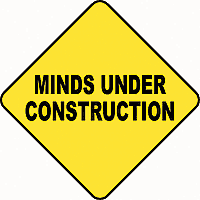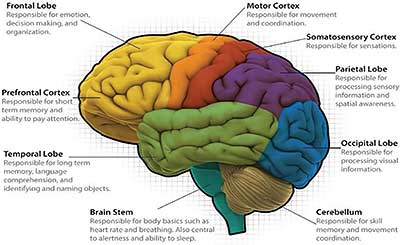|
|
HEALTHY HAPPENING December 2017
|
Touch That Heals
by Christina Myers |
Touching someone in a healing way sounds so fundamentally easy, doesn’t it? After all, as babies, touch is our first language. The “laying on of hands” is the foundation for modern medical practices.
Yet, maybe you have experienced some of the same things I have: the stylist who gives too vigorous a shampoo, the phlebotomist who pokes the needle too hard searching for a vein, The dentist who stretches your mouth open and vigorously pokes inside with tools, the X ray technician who whips my leg around after a painful kneecap dislocation.
Touch informs us and forms us. We are all born with an incredibly sophisticated neural network that helps us understand signals that come in through the largest organ of our bodies – our skin. We receive messages from the quality, depth, speed, and intentionality of someone’s touch. That means your nervous system can register the agitation in the nervous system of the above technician and the intent of the movements of the above mentioned practitioners.
Touch is fundamental to healing. A touch that heals supports the body’s innate wisdom to right itself and mobilizes the natural healing mechanisms of the body. Healing touch initiates the body’s ability to unwind, soften, and let go. It increases the capacity for energy to flow and a deeper, embodied sense of awareness. A healing touch creates a dialogue between practitioner and recipient that informs the nature of a therapeutic intervention.
 In my integrated, bodymind approach to health, healing happens through the body. A quiet nervous system that is NOT in fight or flight agitation is a prerequisite to all other potential interventions. Soft hands that listen without an agenda “to do” something, initiate the “quieting” process. Healing touch reflects the qualities of: In my integrated, bodymind approach to health, healing happens through the body. A quiet nervous system that is NOT in fight or flight agitation is a prerequisite to all other potential interventions. Soft hands that listen without an agenda “to do” something, initiate the “quieting” process. Healing touch reflects the qualities of:
Calm
Ease
Listening
Openness
Receptivity
Energetic vibrancy
Embodiment
Non-doing
Non-invasive
This means the practitioner must embody all these qualities within their own system.
Then you can discover what the body-self needs and the practitioner becomes a mirror for the client so they can feel themselves. This is especially important for people who are unaware of their bodies and for people who are already on sensory overload from stress, emotional overwhelm, injury of any kind, and pain.
When the body-self can inform the healing process in this way, many opportunities for health present themselves. Physical aches and pain are THEN (not before) addressed structurally. Awareness grows about the connections between the body’s physical complaints and one’s emotions, thoughts, and life circumstances. Lifestyle interventions, such as diet, exercise, and sleep, happen within a holistic perspective.
Touch that heals AND eases, educates, and empowers!
Curious? Have more questions? Want to make an appointment? Call Christina Myers at 937-284-2190 and I am happy to answer your specific concerns.
| In January, 2018, AWAKENING THE WISDOM OF THE BODY, a healing movement workshop series starts on Mon. Jan. 22 with “Cultivating Inner Peace and Quiet” followed by “Your Inner Healer” on Mon. Feb. 12; “Body as Compass” on Mon. Mar. 12; and “Awakening the Feminine” on Mon. Apr. 9. Call Christina Myers at 937-284-2190 for more information and registration. |
|
Managing Inflammation Naturally
by Moonflower
|
Emily Stock, an herbalist and founder of Sundial Medicinals, concluded her fall herbalism series at Moonflower Co-op with a class on natural inflammation management.
External inflammation from acute injuries to the skin, muscles, and tissues appears as redness, swelling, bruising, and pain. Preventing stagnation of the blood by using heat promotes healing, and topical herbs can alleviate the inflammation. Calendula, arnica, comfrey, and plantain provide relief from superficial wounds. If the inflammation causes persistent pain, try jamaican dogwood, california poppy, and/or kava for natural pain relief. Emily cautioned class participants about the use of painkillers such as ibuprofen, aspirin, and tylenol due to their damaging effects on the liver and gastrointestinal tract. 
For much of the class, Emily focused on systemic inflammation caused by stress, food allergies and intolerances, sleep deprivation, systemic dryness, and toxic overload. General anti-inflammatory herbs include turmeric and marshmallow root. Adding licorice root to an herbal preparation mitigates the drying effects of turmeric.
Crucial nutrients such as vitamin D, vitamin E, magnesium, and omega-3s can often be deficient in individuals experiencing systemic inflammation. Seaweeds and bone broths can provide necessary minerals and trace minerals.
Hydration is another essential aspect of inflammation management. An individual’s body weight divided by two can provide the daily amount of water needed in ounces. However, drinking even more water can be helpful. Emily suggested drinking a couple of glasses of hot water in the morning to flush the system and promote healthy digestion. Additionally, a combination of magnesium and psyllium husk is an excellent evening blend to facilitate digestion for the morning.
Sleep deprivation significantly contributes to systemic inflammation. Resetting the sleep cycle consists of sleeping for 12 hours per night for three nights in a row followed by maintaining 9 hours of actual sleep per night (not including the time it takes to fall asleep). Some individuals may need a longer period of intensive rest to escape fatigue and inflammation caused by lack of sleep.
Food intolerances and allergies are often suppressed or tolerated by individuals who experience them. In order to test for these, try a six week elimination diet, during which you remove all foods you suspect may be causing inflammation. Pair the elimination diet with a gut healing regimen to repair the damage caused by these food intolerances and/or allergies. After six weeks, slowly reintroduce the targeted foods by eating them two to three times per day for a week. Typically, the symptoms of a food allergy, including sinus congestion, skin irritation, headaches, gas, and bloating, will present more clearly during this reintroduction. A daily food diary, accompanied with a journal of descriptions of mood, physical symptoms, and other health-related notes could help track which foods are causing inflammation.
Emily’s inflammation management class provided a wealth of knowledge and tactics for addressing both injury-related and systemic inflammation. Visit Moonflower Co-op, browse our assortment of wellness products, and view our Facebook page for upcoming classes. www.facebook.com/moonflowercoop
|
The Brain Integration Technique
|
 Terri Harris is a Certified Practitioner of The Brain Integration Technique who is part of the national movement to permanently relieve suffers of Learning Disability (LD) and their families of the heartaches and failure associated with the disability. Learning and attention issues are not the result of low intelligence, poor vision/hearing, or lack of access to quality instruction. Brain Integration has had remarkable success over the past three decades eliminating these disabilities without drugs or exercises so that children and adults ‐‐ and their families ‐‐ can go on to live normal lives. Symptoms may include: Being accident prone; daydreaming excessively; difficulty telling time; eye strain, trouble remembering directions, the months of the year, names, left/right; differentiating colors; letter/number reversals; poor balance spelling, reading comprehension, math skills, performance anxiety, and many more. Although many of us exhibit some of the behaviors on this list from time to time, the person with a learning difficulty exhibits many of the symptoms all of the time. Traditional Western Treatment relies heavily on the use of medication to address the LD crisis, especially stimulants such as Ritalin.Drugs only mask the true causes of LD. Terri Harris is a Certified Practitioner of The Brain Integration Technique who is part of the national movement to permanently relieve suffers of Learning Disability (LD) and their families of the heartaches and failure associated with the disability. Learning and attention issues are not the result of low intelligence, poor vision/hearing, or lack of access to quality instruction. Brain Integration has had remarkable success over the past three decades eliminating these disabilities without drugs or exercises so that children and adults ‐‐ and their families ‐‐ can go on to live normal lives. Symptoms may include: Being accident prone; daydreaming excessively; difficulty telling time; eye strain, trouble remembering directions, the months of the year, names, left/right; differentiating colors; letter/number reversals; poor balance spelling, reading comprehension, math skills, performance anxiety, and many more. Although many of us exhibit some of the behaviors on this list from time to time, the person with a learning difficulty exhibits many of the symptoms all of the time. Traditional Western Treatment relies heavily on the use of medication to address the LD crisis, especially stimulants such as Ritalin.Drugs only mask the true causes of LD.
At the heart of this natural treatment system are the two interlocking concepts of neurology and acupressure that have been successfully applied worldwide to treat people with long‐standing learning difficulties, head injuries and even strokes. Learning disabilities are often the result of certain types of emotional stress, especially early in life when the brain is still developing, Brain Integration releases the emotional stress and overrides the alarm circuits that have prevented optimal learning, decision‐making and behavior patterns. We have the power to remove the LD stumbling blocks that stand in the way of true happiness and success.
|
Am I Losing My Mind?
|
Ho-Ho-No…. Can’t remember what’s on your holiday shopping list? You’re not alone: Even Santa has to check his list twice!
But, if you are having trouble remembering ingredients from the cookie recipe you just read, you may be dealing with short-term memory loss.
What is short-term memory loss?
You can think of short-term memory, also called working memory, as your brain’s version of a sticky note. It helps you remember where you put your keys, what you ate for breakfast, the name of the person you just met, and the date and time of the appointment you just scheduled. This kind of information disappears quickly unless you take steps to push it into your long-term memory. This is why good teachers engage as much of the brain as possible in the learning process. We remember things better when we repeat them, sing them, write them down, draw pictures about them, act them out, etc.
One of our patients once confided, “My memory is very good, it’s just short.” This is because he was having increasing difficulty moving information from his short-term to his long-term memory. Common symptoms of mild short-term memory loss include: Misplacing common objects like keys and glasses. Not being able to come up with the right word or name, even though it’s on the tip of your tongue. Walking into a room and not remembering why.
Memory Loss: A Call To Action
Noticing these symptoms with increasing frequency, some people begin to panic, fearing they have Alzheimer’s dementia. Others chalk the symptoms up to “getting older.” Very often, neither one is the culprit. Stunningly, experts have found that up to half of patients diagnosed with Alzheimer’s don’t really have it! Moreover, experts say that brain function and memory should be as good in your 90s as they were in your 20s.
If you aren’t feeling as sharp as you were a few years or decades ago, a painless, comprehensive test in our office can tell us which parts of your brain are not functioning as well as they should. Testing is covered by Medicare and most insurances. This “brain map” can help us understand what is really going wrong and how to fix it.
Contrary to what scientists used to believe, the brain isn’t a stagnant organ that stops developing once a person reaches adulthood. New connections are being made every day as we learn new information, develop new skills, and have new experiences. And we now have a host of natural tools that can actually improve brain function, even in patients with early dementia. Unfortunately, there is currently no drug that has been proven beneficial in the long term for dementia. This is why Consumer Reports could not recommend a single Alzheimer’s drug as a “Best Buy.”
Fortunately, non-drug approaches are demonstrating increasing success with memory loss, but without the risks and side effects that dominate the second half of each drug commercial. In other words, even if your brain map demonstrates a neurodegenerative pattern like Alzheimer’s, there is still a lot you can do to preserve and even improve what you have left.
By contrast, if your brain isn’t working so well due to another cause, brain mapping can help us figure out what that is and fix it. Some common reversible causes of memory problems include stress, inadequate or poor-quality sleep, infections, gut dysfunction, depression, concussion, and deficiencies of certain vitamins, minerals, fatty acids, amino acids, and hormones.
So, no matter how young or old, if you (or a loved one) are concerned that you might not be firing on all cylinders, don’t think for a moment that it’s because you’re just getting older. Don’t let your doctor give you that line, either. Call us for a comprehensive evaluation and recommendations for improved brain function. Your life—and quality of life—actually depend on it. Moab Family Health (435) 259-4466
|
|
|
|
|
|
|
© 2002-2024 Moab Happenings. All rights
reserved.
Reproduction of information contained in this site is
expressly prohibited.
|
|